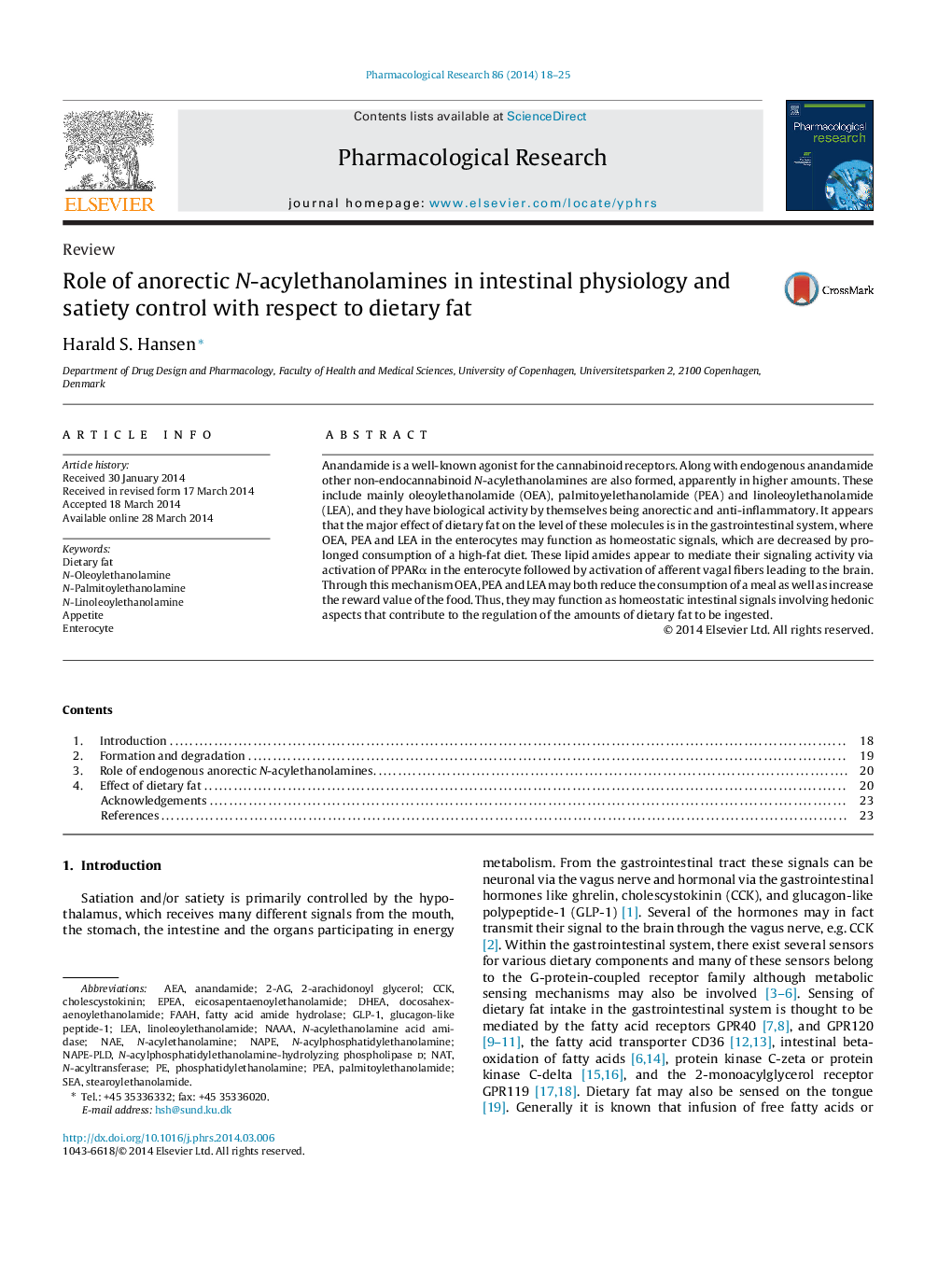| کد مقاله | کد نشریه | سال انتشار | مقاله انگلیسی | نسخه تمام متن |
|---|---|---|---|---|
| 2562723 | 1560853 | 2014 | 8 صفحه PDF | دانلود رایگان |

Anandamide is a well-known agonist for the cannabinoid receptors. Along with endogenous anandamide other non-endocannabinoid N-acylethanolamines are also formed, apparently in higher amounts. These include mainly oleoylethanolamide (OEA), palmitoyelethanolamide (PEA) and linoleoylethanolamide (LEA), and they have biological activity by themselves being anorectic and anti-inflammatory. It appears that the major effect of dietary fat on the level of these molecules is in the gastrointestinal system, where OEA, PEA and LEA in the enterocytes may function as homeostatic signals, which are decreased by prolonged consumption of a high-fat diet. These lipid amides appear to mediate their signaling activity via activation of PPARα in the enterocyte followed by activation of afferent vagal fibers leading to the brain. Through this mechanism OEA, PEA and LEA may both reduce the consumption of a meal as well as increase the reward value of the food. Thus, they may function as homeostatic intestinal signals involving hedonic aspects that contribute to the regulation of the amounts of dietary fat to be ingested.
Journal: Pharmacological Research - Volume 86, August 2014, Pages 18–25